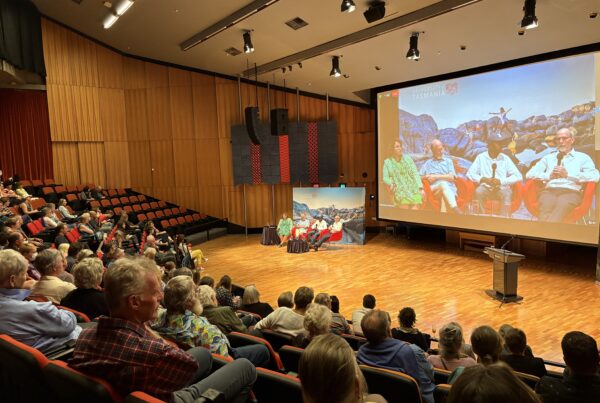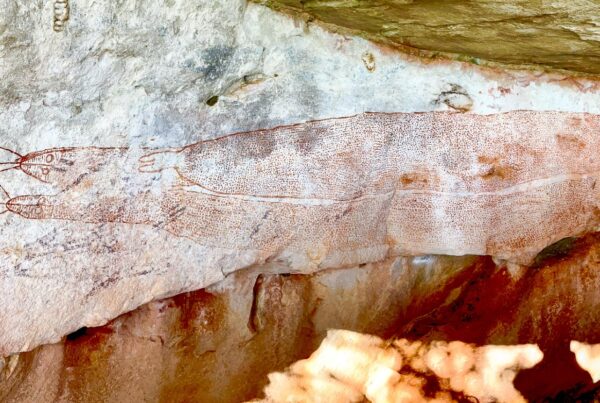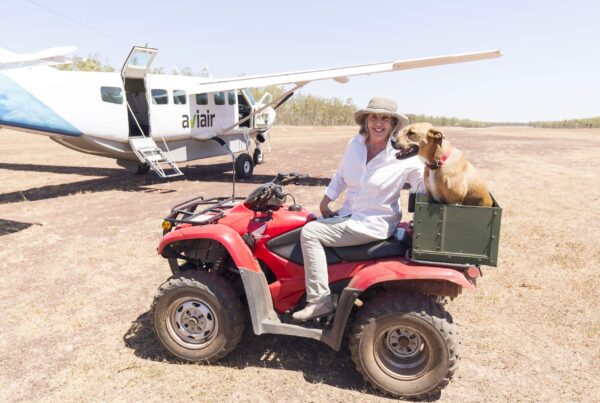Research to establish a series of long-duration paleo-environmental and paleo climate reconstructions for the Kimberley region spanning the last 60,000 years has been awarded an Australia Research Council grant of $460,429. The project was seed funded by the Kimberley Foundation Australia.
The multi-disciplinary research program Unlocking the environmental archives of the Kimberley’s past is led by Professor Hamish McGowan at The University of Queensland. RAA provided seed funding of $40k to support the initial research phase and will commit an additional cash contribution of $360k for the exciting next phase. RAA is a recognised collaborator and partner organisation in this research. The cash total of $860,429 over four years is supported with in-kind funding from both Dunkeld Pastoral Company and the RAA, leveraging the project a further $78k.
Collaborating with Kimberley Foundation Australia, Dunkeld Pastoral Co Pty Ltd, Albert Ludwig University of Freiburg and seven other universities, the project aims to provide new understanding of the causes of environmental change and impacts on Australia’s Kimberley region since the arrival of Australia’s earliest inhabitants, and to inform conservation policy that will preserve the region’s globally significant rock art against environmental change and economic development. Ultimately all researchers in the Kimberley will be able to access a paleo-environments and paleoclimate e-atlas for the Kimberley. Below is the report from Emily Field
Across much of tropical Australia the monsoonal climate affects sediments which we might typically use to investigate past environmental change. Monsoonal rains might scour away the sediment, and the wind may remove it during dry periods. Fossils within the sediments can also get affected by this seasonality as they can become weathered. However, in some locations across the Kimberley, springs containing deep peaty sediment deposits have been found which provide an exciting avenue for palaeoenvironmental research.
In 2005 Dr Andy Hammond and the late Grahame Walsh collected sediments from a number of sites, including Black Springs, which were donated to the University of Queensland. Initial analysis showed that these springs contained fossils and information for palaeoenvironmental research, including pollen and dust. As a result, a record of environmental change thought to be up to 15,000 years long could be developed from Black Springs. Based on this success, a team of researchers from the University of Queensland (UQ) and University of Wollongong (UoW) took samples from a number of springs across the Kimberley in the 2015 dry season.
Obtaining reliable dates for the sediments is essential. “We would normally expect older dates at the bottom of the spring sediments” Emily says. “As the sediment gets shallower the dates become younger, representing the process of deposition through time.”
However, the initial radiocarbon dates didn’t follow this pattern. A team of researchers from UQ, UoW, James Cook University, the University of Freiburg and ANSTO were called in to assist. They found that the application of standard radiocarbon dating methods to the springs was problematic due to groundwater fluctuations and biological processes such as root growth down through the sediments. “We needed to isolate carbon from the sediments created at the time of past burning events” explains Emily.
Emily and the team found that a relatively new radiocarbon pre-treatment technique, called hydrogen pyrolysis (HyPy) allowed that process to take place and removed most other contaminants. Emily finally obtained a logical sequence of radiocarbon dates for the springs using this technique.
Next, the research team worked out whether the past environmental changes seen at Black Springs reflected broader scale climatic change across the Kimberley, or whether they were a response to local spring dynamics.
“We did this by analysing three springs spread across a distance of 100km, and by looking at the microfossils and geochemistry of their sediments. Interestingly, each of the springs started to accumulate sediment at roughly the same time – during the deglacial around 14,500 years ago. This suggested to us that we were seeing a response to a regional scale change in climate at this time” Emily says.
With the help of Dr Jon Tyler from the University of Adelaide, statistical techniques showed that there were indeed synchronous changes at the three springs in the geochemistry and non-pollen palynomorphs (ecological microfossils which are preserved alongside pollen but which are derived from other sources such as algae and fungi). “This showed us that these indicators were responding to regional scale changes, and that the springs were recording climatic changes across northwest Australia.
“What we now know from the palaeoenvironmental records developed from the three springs is that monsoonal precipitation increased in the deglacial from around 14,500 years and remained relatively high until about 7500 years ago. It seems to have been particularly wet across the region between 11,000 – 7500 years before present but the monsoon then appeared to weaken after 7,500 years. We see a short return to increased rainfall at about 4200 years ago.”
This coincides with the global ‘4.2 ka event’ which was one of the most severe climatic events of the last 12,000 years, although there are limited records for this event from Australia. “It’s intriguing that we’re picking this up in the northwest,” says Emily. The records also show that the monsoon weakened 2600 years ago, with a period of particularly low rainfall between 2000 and 1000 years, before becoming more active again in the last millennium.
“What we hope now is that our records of environmental change can be useful to all the other researchers working in the Kimberley and that our work will go on to help others interpret their records” Emily says

L-R Hamish McGowan and Emily Field, University of Queensland, sampling Mud Springs, North Kimberley. Photo: Sam Marx









